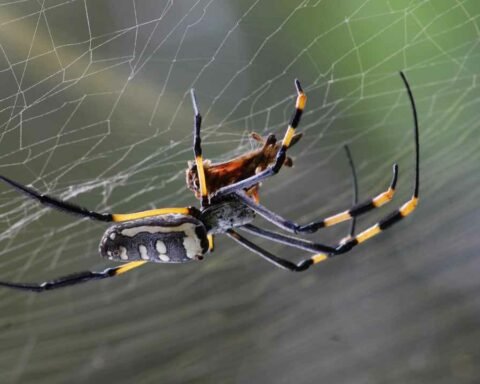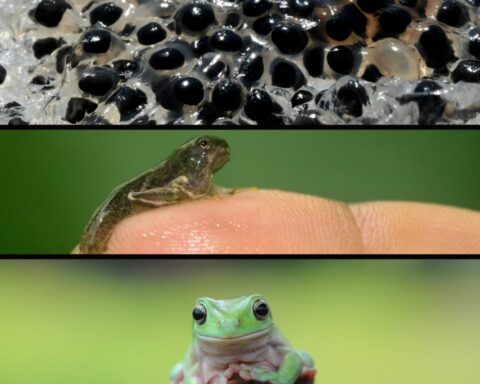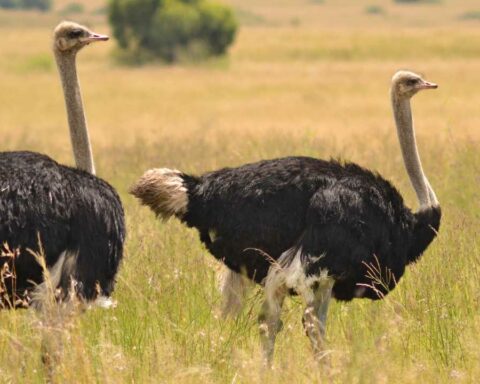Mayflies are aquatic or water insects commonly found in wetlands, from shallow streams to lake edges. They are also known as shadflies or fishflies in Canada and some parts of the United States. There are more than 3,000 known species of mayflies, grouped into over 400 genera and 42 families. Mayflies are well-known for their short lifespan. Adults live an average life of only one to two days, however, they spend most of their lifetime in the nymph stage. Here, we have gathered information about how long mayflies live, the life cycle of mayflies, why mayflies have such a short lifespan, and factors that influence and shorten their lifespan.
How Long Do Mayflies Live?
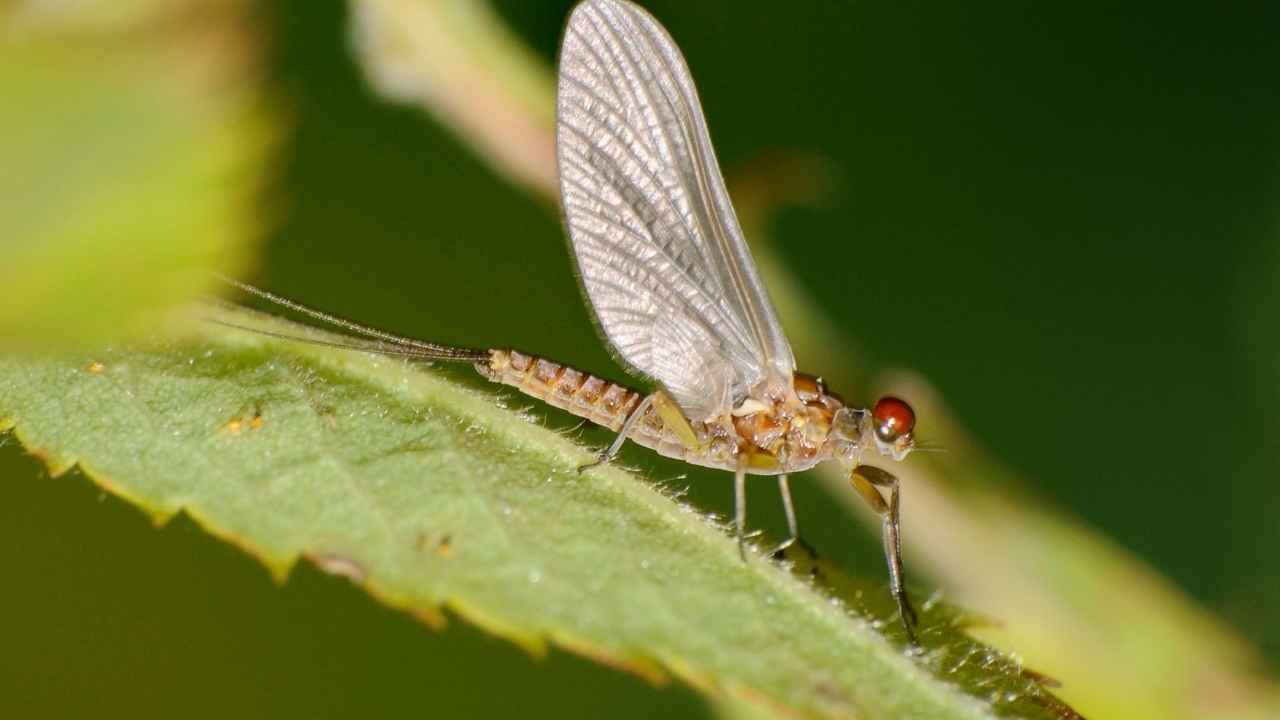
Adult mayflies have an average lifespan of only one or two days. However, they spend most of their lifetime in the nymph stage, where their lifespan ranges from two weeks to two years. The duration of each developmental stage varies among species. Several environmental factors and habitat conditions also influence the lifespan of mayflies.
Lifespan of nymph:
The nymph stage constitutes the longest part of the mayflies life cycle, with a lifespan ranging from two weeks to two years.
Lifespan of Subimago:
The subimago is the transitional stage between mayfly nymphs and adults. They are winged juveniles and are not sexually mature. The lifespan of a subimago ranges from a few hours to a day.
Lifespan of Imago (Adult):
The imago is the adult stage of the mayfly life cycle. Adult mayflies are renowned for their short lifespan, living from a few hours to a few days. Various factors, such as environmental and habitat conditions, affect their lifetime in this stage. They also lack functional mouthparts for feeding and rely on the energy reservoir stored during the nymphal stage, contributing to their brief lifespan.
Many species of mayflies live for only two hours in the adult stage. Among all mayflies, female individuals of the Dolania americana species have the shortest lifespan in the adult stage, lasting less than five minutes.
Together with caddisflies and stoneflies, mayflies are used as indicators of aquatic ecosystem health because they thrive in less polluted, cleaner, and well-oxygenated water.
Life Cycle Of Mayflies
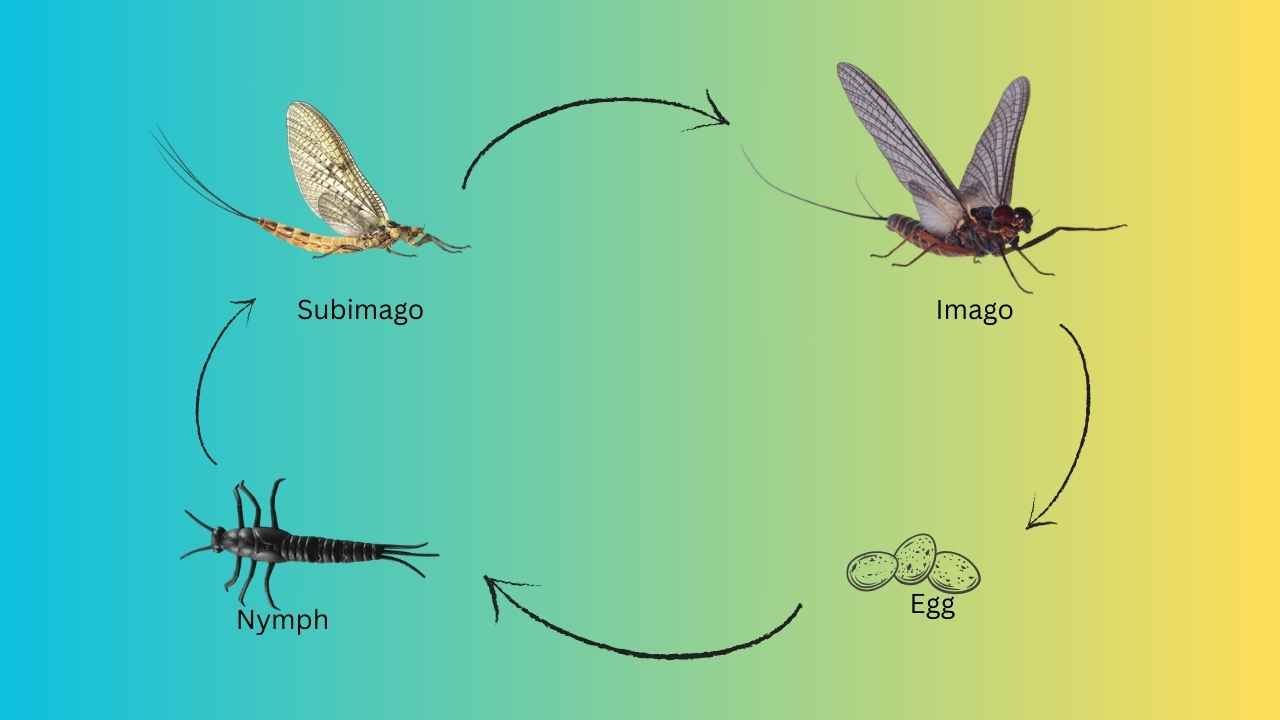
There are four stages in the life cycle of mayflies. That is:
-
Egg
Adult male mayflies fly over water in the form of swarms. Females make their way into the swarm to mate with males. After mating, the females fall down the water surface to lay eggs. The eggs sink to the bottom and stick to stones and aquatic vegetation. The eggs take from a few days to several weeks to hatch.
-
Nymph
The eggs hatch into nymphs. The newly hatched nymphs are tiny with less than 1mm in length. They pass through many developmental phases and grow as long as 3 cm. They reside at the bottom of rivers and other freshwater sources and hide in the sediments. The nymphs spend from two weeks to two years in the river bottom before making their way to the surface as adults.
The nymphs shed their outer layer and fill their midsection with air while floating on the water’s surface.
-
Subimago
On the surface, the outer shells of nymphs crack and their wings appear. At this stage, they are called subimagos. Subimagos are winged juveniles that have dull colors and are not sexually mature. They have underdeveloped eyes, legs, and genitalia. Their wings are covered with microscopic hair known as microtrichia. Subimago molts again to become a complete adult. It makes mayflies the only insects that undergo molting while having wings.
-
Imago
The imago is a fully adult and sexually mature mayfly. Adult mayflies do not eat and have air-filled digestive systems. They have an average life of one to two days. They mate in swarms to start the cycle again, lay eggs, and then die.
Factors Influencing Mayfly Lifespan
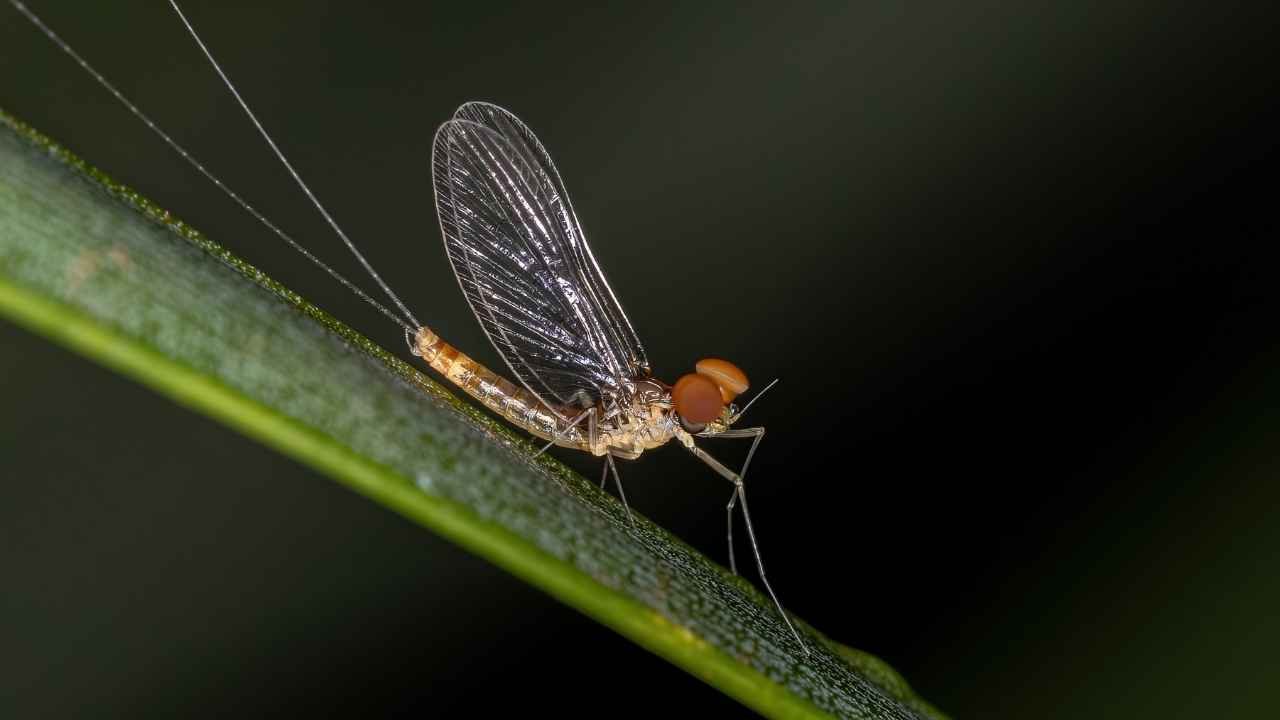
Many factors greatly influence the lifespan of mayflies. Some of these factors are:
Species Variation
There are more than 3,000 species of mayflies. The duration of the adult stage of different species may vary because of adaptations to their specific environments and their positions in the ecosystems (ecological niches).
Environmental Conditions
Environmental factors like temperature, humidity, and day length can influence the development and emergence of mayflies. Warm temperatures may boost their lifecycle and lead to a shorter lifespan.
Habitat Characteristics
The nature of the aquatic habitat where mayflies spend the nymphal stage greatly influences the lifespan of mayflies. A clean, well-oxygenated habitat with a suitable substrate leads to the healthy development of nymphs. While alterations to the habitat, such as pollution and sedimentation may affect the nymphal stage and so the adult lifespan.
Predation
Adult mayflies are highly vulnerable to predators, such as birds, spiders, and carnivore insects. Factors like the availability of hiding places, flight behavior, and emergence timing can influence their predation risk.
Reproductive Behavior
Reproduction is the primary purpose of the adult mayflies. The activities of mating and egg-laying require intensive energy, which may contribute to the short lifespan of adult mayflies.
Nutrition
Proper nutrition during the nymphal stage is essential for the development of mayflies. The availability of suitable food sources can influence their overall health and growth rate, and so the adult lifespan.
Seasonal Variation
Mayflies usually show seasonal patterns in their lifecycle. Factors like temperature and day length change with the seasons that can influence the timing of emergence and the lifetime of the adult stage.
Why Do Mayflies Have Such A Short Lifespan
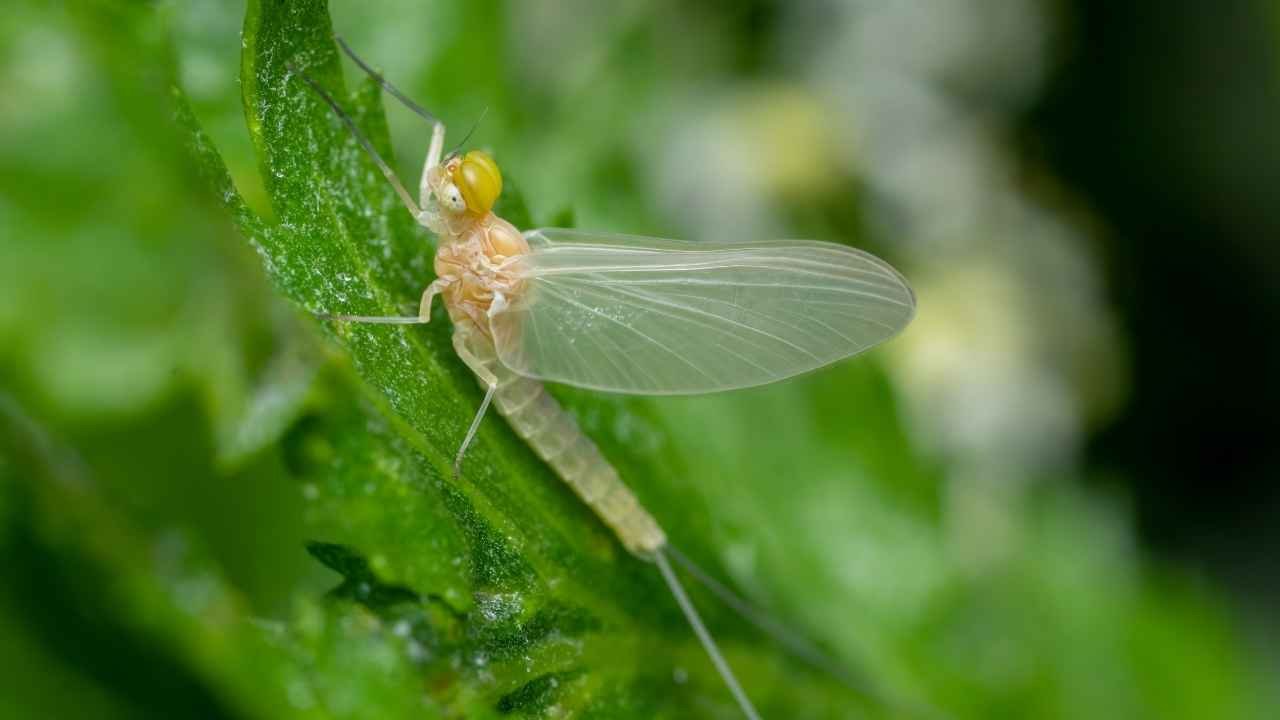
Adult mayflies have a short lifespan because they are primarily focused on reproduction and adapted to reproduce successfully in a short time. Many reasons contribute to the short lifespan of mayflies, such as:
Reproductive Focus :
The primary goal of adult mayflies is to reproduce. Once they emerge from the water as winged adults, their primary purpose is to find a mate, mate and lay eggs. Their short adult lifespan is optimized for this reproductive purpose.
Ephemeral Nature Of Habitat:
Mayflies are usually found in freshwater bodies. Such habitats are ephemeral, which means they are temporary or seasonal. They synchronize their life cycle with the availability of suitable conditions essential for the development of nymphs. This synchronization then leads to the emergence of adults at the same time, which makes their efficient mating and egg-laying possible within a short period.
Energy Allocation:
Adult mayflies use most of their energy in the process of reproduction; finding mates, mating, and egg laying. Allocating their energies to such activities may not allow them to live long in the adult stage.
Limited Functional Mouthparts:
Adult mayflies do not have any functional mouthparts and are unable to feed during their short lifetime. They depend on their energy reserves stored in the nymphal stage. The absence of feeding abilities further reduces the chances of long-living in their adult stage.
Vulnerability To Predation:
Mayflies are highly vulnerable to predators. They easily fall prey to predators because of their fluttery slow flights and fragile bodies. Due to their short lifespan, they easily achieve their goal of reproduction and reduce the time of their exposure to potential predators.
Seasonal Environmental Changes:
Mayflies usually experience seasonal changes in their habitats, such as changes in temperatures, daylight time, and availability of water. Because of their short lifespan, they take advantage of specific environmental conditions suitable for reproduction.

